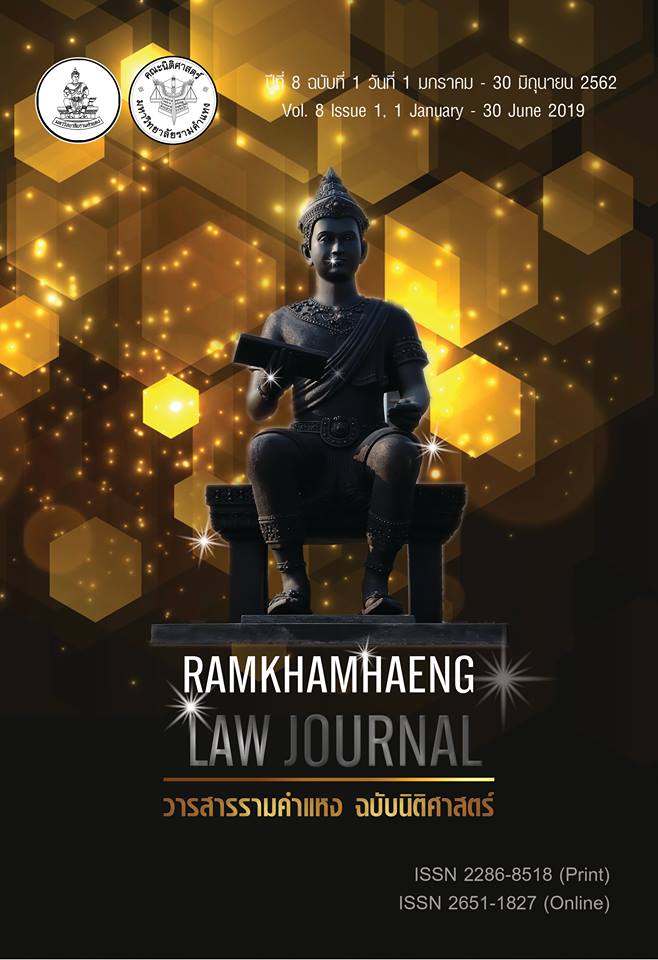ความเชื่อมโยงระหว่าง “สิทธิชุมชน” กับ “ทรัพยากรธรรมชาติและสิ่งแวดล้อม” ภายใต้รัฐธรรมนูญแห่งราชอาณาจักรไทย พุทธศักราช 2560
Main Article Content
Abstract
This article is extracted from the main substance of the final report of the research on “Linkage between Community Rights and Natural Resources and Environment under the Constitution of the Kingdom of Thailand B.E. 2560” composed of two parts: part one on knowledge relating to community rights in the dimensions of natural resources and environment, and part two on practical guidelines for recognizing the community rights according to the Constitution of the Kingdom of Thailand, B.E. 2560.
With regard to Part One, the context is about concepts and principles on both dimensions: international law and domestic law. Under international law, it is found that among different international instruments: on human rights to which Thailand is or is not a party, or on environment, none of them defines the so-called “Community Rights”, nor recognizes the Community Rights asa “Group’s Rights” as an independent type of rights separated from “Individual Rights”.Under domestic law, the Constitution of the Kingdom of Thailand, B.E. 2560 stipulates that “community has the rights” to manage, maintain and utilize natural resources, environment and biodiversity in a balanced and sustainable manner, in accordance with the procedures provided by law. In addition, Article 4 of the Organic Act on National Human Rights Commission, B.E. 2560extends the definition of “Human Rights” to cover “Constitutional Rights”, making the National Human Rights Commission who basically has authority to investigate violation of human rights also has power to investigate the infringement of community rights.
Concerning Part Two, practicalguidelinesare designed to recognize the community rights in accordance with the Constitution of the Kingdom of Thailand, B.E. 2560 especially in making legislations to implement the community rights as provided for in the Constitution. To accomplish this, it is proposed that the “traditional legal infrastructure” must be adjusted with the introduction of “legal pluralism”, covering two sets of law representing different values but working together under the same legal system, in order to bridge and balance between State-power oriented and individualism, and communitarianism.
Besides, the guidelinespropose two connections to be established: the first is the connection between legal school of thought with State-power oriented versus legal school of thought promoting communitarianism, the second is the connection between “State Property Regime” and “Common Property Regime” in co-managing thenatural resources and environment. Finally, to translate the principles of community rights from the Constitution into the legislation, the guidelines recommend the so-called “Community-based Co-management” as the basis of the Thai legal system in implementing the following issues: 1) Direction on how to exercise the right of community relating to the environment according to Article 43 of the Constitution of the Kingdom of Thailand B.E. 2560. 2) Performance of the State Dutiestoguarantee the rights of community, and rights of community to follow up and urge the State to comply with Article 51, Article 57 and Article 58 of the Constitution. 3) Role of the Office of the National Human Right Commission of Thailand in supporting the rights of community as mentioned in 1) and 2)

